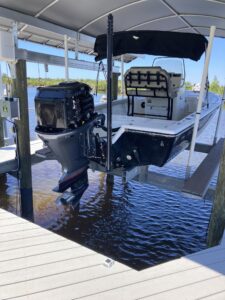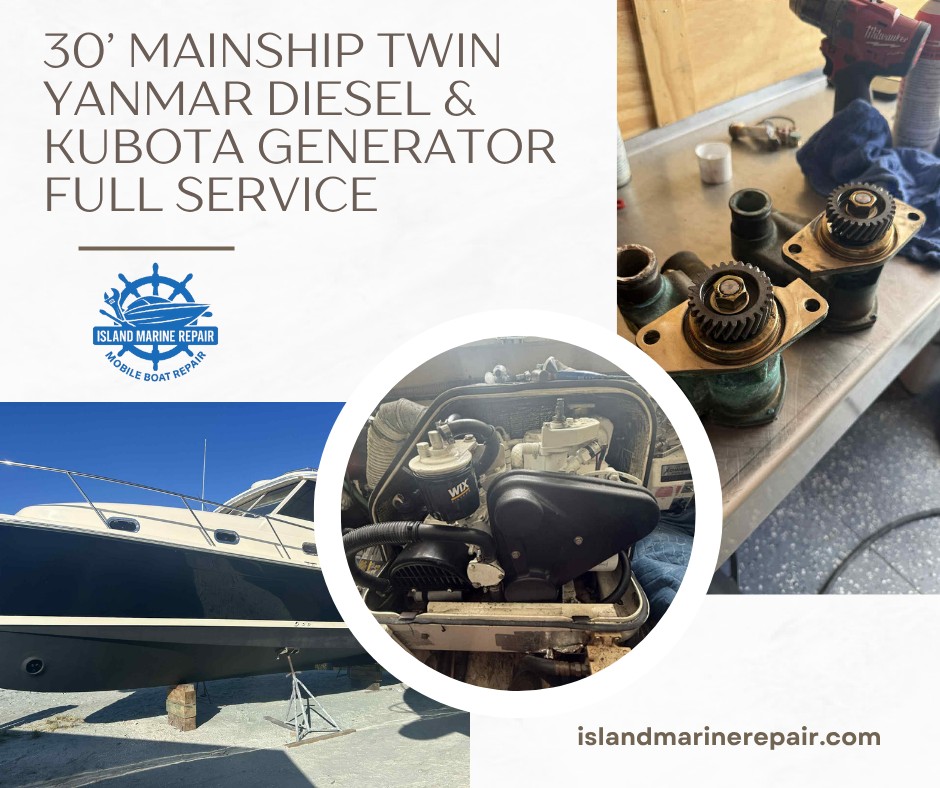Keeping Boats Beautiful Without Breaking the Bank
Owning a boat in Fort Myers is pure Florida living—bright skies, calm bays, and year-round access to water. Yet the same salt, heat, and humidity that make boating paradise also wear down your vessel fast. Hull oxidation, vinyl cracking, and waterline stains can appear after just a few months without care.
Still, maintaining a brilliant finish doesn’t have to be expensive. Smart scheduling, the right tools, and consistent effort can save hundreds each year while keeping your vessel looking new.
Whether you prefer fixing things, especially boats, or want simple, low-cost maintenance routines, this guide shares practical, affordable detailing habits tailored to Southwest Florida conditions.
Why Regular Detailing Saves Money Long-Term
Skipping upkeep seems cheap at first—but neglect always costs more later. Salt buildup, UV exposure, and pollution slowly break down gelcoat and fittings. Once oxidation sets in, full restoration can run into thousands.
Routine boat detailing Fort Myers care—washing, drying, and sealing—costs a fraction of that. Think of it as maintenance insurance that preserves resale value, performance, and pride of ownership.
A clean hull also runs more efficiently. Smooth surfaces reduce drag, saving fuel every trip.
1. Rinse and Dry After Every Outing
The most budget-friendly detailing step is free: freshwater.
After each day on the Gulf or Caloosahatchee, rinse from top to bottom using low-pressure water. Salt crystals form microscopic pits that dull finishes and corrode hardware. Wiping dry afterward with microfiber prevents water spots.
Tip: Use a soft nozzle sprayer instead of power washers; high pressure can strip wax and drive salt deeper into seams.
2. Choose the Right Soap—Less Is More
Household cleaners like dish soap are cheap but harsh. They remove protective wax, leaving fiberglass exposed. Instead, pick a pH-balanced marine shampoo—it’s concentrated, so a single bottle lasts many washes.
Use two buckets: one with soapy water, one for rinsing sponges. This small habit avoids scratching and extends wax life.
3. DIY Waxing With Smart Timing
Professional waxing yields a deep gloss, but you can achieve strong results yourself for far less. The secret is timing: wax in cooler morning hours so heat doesn’t bake the product prematurely.
Budget-Friendly Wax Routine
-
Use a polymer-based marine wax—it lasts longer than carnauba in tropical climates.
-
Apply thin, even layers with microfiber applicators.
-
Buff gently by hand or with an orbital buffer (affordable models cost under $100).
Repeat every three months during heavy salt exposure seasons. Your effort pays off when water beads perfectly after each rinse.
4. Focus on High-Impact Areas
Not every surface needs equal attention. Prioritize:
-
Hull sides and transom: Most visible and most exposed.
-
Chrome and stainless fittings: Regular polish prevents rust streaks.
-
Windshield and rails: Keep visibility and shine high.
A targeted 30-minute cleanup after each weekend trip prevents heavy buildup later—no full-day detail needed.
5. Keep Vinyl and Upholstery Simple
Sun-baked vinyl turns brittle quickly. Instead of pricey reupholstering, preserve what you have.
-
Mix mild soap with warm water for cleaning.
-
Avoid bleach; it weakens stitching.
-
Apply UV-protective vinyl conditioner monthly.
Old T-shirts make great reusable rags—soft enough to avoid scratches, easy to wash and reuse.
6. Homemade Cleaning Hacks That Actually Work
Budget doesn’t mean cutting corners—it means using smart, safe substitutes.
-
Waterline stains: Equal parts white vinegar and water dissolve light scum lines.
-
Cloudy plastic windows: Toothpaste or baking soda gently restores clarity.
-
Metal polish alternative: A dab of aluminum foil dipped in cola removes minor rust.
Always test on small spots first, then rinse thoroughly.
7. Store Smart to Save
A simple cover prevents more damage than any cleaner can fix. UV-rated tarps or custom-fit boat covers block sunlight and bird droppings—common culprits for permanent stains.
If you can’t store indoors, use vented covers to avoid mildew. Proper storage reduces how often deep detailing is needed, lowering overall maintenance costs.
8. Prevent Oxidation Before It Starts
Florida’s intense sun oxidizes gelcoat fast. Once chalkiness appears, fixing it requires compounding—a labor-intensive process. Regular waxing, even light spray-on products, maintains a barrier.
During long dock stays, wipe down hull sides with a quick-detail spray weekly. It’s a five-minute task that prevents costly oxidation repair later.
9. Group Maintenance Days
Instead of long, expensive cleanings, break tasks into smaller sessions.
-
One weekend: wash and wax hull.
-
Next weekend: clean interior.
-
Following: polish hardware.
Short sessions prevent burnout and keep costs consistent. It also helps you monitor wear and tear early.
10. Buy Supplies in Bulk
Marinas often charge premium prices for small bottles. Purchase soaps, waxes, and towels in bulk online or from marine-supply stores. Look for combo packs with concentrates—you’ll save more per use and reduce plastic waste.
11. Reuse and Repurpose
-
Cut worn bath towels into cleaning rags.
-
Use old toothbrushes for seams and fittings.
-
Save empty spray bottles for homemade cleaners.
Reducing waste is not only economical—it’s environmentally friendly for Florida’s delicate waterways.
12. Know When to Call in a Pro
Budget detailing doesn’t mean avoiding professionals entirely. Some tasks—like compounding oxidation, cleaning moldy interiors, or applying ceramic coatings—require equipment and skill.
A reliable detailer provides all Southwest Florida boaters quality customer service, offering honest advice and flexible packages. Having pros handle major jobs once or twice a year while you maintain in between keeps costs down and quality high.
The Cost Comparison
| Service Type | DIY Cost per Session | Professional Cost | Ideal Frequency |
|---|---|---|---|
| Basic Wash | $2–$5 (supplies) | $75–$100 | Weekly |
| Wax/Sealant | $15–$25 | $150–$300 | 3–4× per year |
| Interior Clean | $5–$10 | $100–$200 | Monthly |
| Full Detail | $25–$50 | $300–$600 | Twice per year |
Consistent small investments in cleaning materials cost far less than a single full restoration later.

Why Fort Myers Boats Need Consistent Care
The Gulf climate combines three destructive forces—heat, humidity, and salt. Every day your boat sits unprotected, those elements erode gelcoat, corrode metal, and stain decks. Regular detailing interrupts that cycle.
Because boating here rarely pauses for “off-season,” protection has to be continuous. Small, steady efforts outperform occasional deep cleans.
Protecting Fiberglass the Affordable Way
Fiberglass needs both cleaning and sealing to stay glossy. Use non-abrasive pads and neutral soaps to avoid scratching. Apply polymer sealant twice a year for UV defense.
If you notice chalkiness spreading, compounding lightly with fine-grade polish may restore gloss before full fiberglass boat repair Fort Myers services become necessary. Prevention here is far cheaper than repair.
Inside Budget-Friendly Professional Options
Some Fort Myers detailers offer:
-
Partial detailing (hull only or interior only)
-
Maintenance memberships with discounted visits
-
Mobile touch-ups for routine washing
These flexible packages make pro-level protection accessible even for budget-minded owners. Asking about seasonal specials can further lower costs.
Community Detailing Days
Local marinas and boating clubs occasionally organize “clean-up days” where members share tools and supplies. Participating saves money, builds community, and keeps slips and docks looking sharp.
If you love fixing things, especially boats, volunteering for group maintenance days turns routine work into social fun.
Eco-Friendly Tips That Save and Protect
Eco-friendly detailing isn’t just good for the planet—it cuts waste and expense.
-
Use biodegradable cleaners that require smaller amounts per wash.
-
Collect rinse water away from drains or use absorbent mats.
-
Dispose of rags properly to avoid contaminating marinas.
Florida waters are sensitive ecosystems, so small actions add up to collective responsibility.
Signs You’re Overpaying
You may be spending more than needed if:
-
You reapply wax too often (it should last months, not weeks).
-
You use automotive products unsuited for saltwater.
-
You ignore preventative cleaning until oxidation returns.
Streamlining your process saves both time and supplies.
Building a Maintenance Calendar
Monthly: Wash, dry, and spray wax.
Quarterly: Deep clean vinyl and interior surfaces.
Biannually: Full wax or ceramic seal.
Annually: Professional inspection and polish.
Writing tasks on a calendar ensures no steps are missed—and helps budget for them evenly across the year.
The Psychology of Routine
Maintenance feels easier when viewed as part of the boating lifestyle, not a chore. Many owners find the process relaxing—an afternoon outside with music, tools, and satisfaction in seeing progress. That attitude keeps motivation high and costs low.
The Real Definition of “Affordable Care”
Affordable doesn’t mean minimal effort. It means smart, steady action—protecting finishes before damage escalates. Whether you clean solo or mix in periodic professional help, the key is consistency.
A few dollars in soap, wax, and microfiber cloths now prevent hundreds later in restoration, corrosion repair, or reupholstery.
Final Thoughts
Florida’s climate doesn’t take a break, and neither should boat care.
By focusing on preventive habits—rinsing, waxing, covering, and conditioning—you can preserve your boat’s shine and value without spending excessively.
Every minute invested pays off with easier cleaning, lower repair bills, and a vessel you’re proud to show off on the Gulf.
For those who enjoy fixing things, especially boats, routine detailing isn’t just maintenance—it’s a ritual that keeps Fort Myers boating beautiful.



